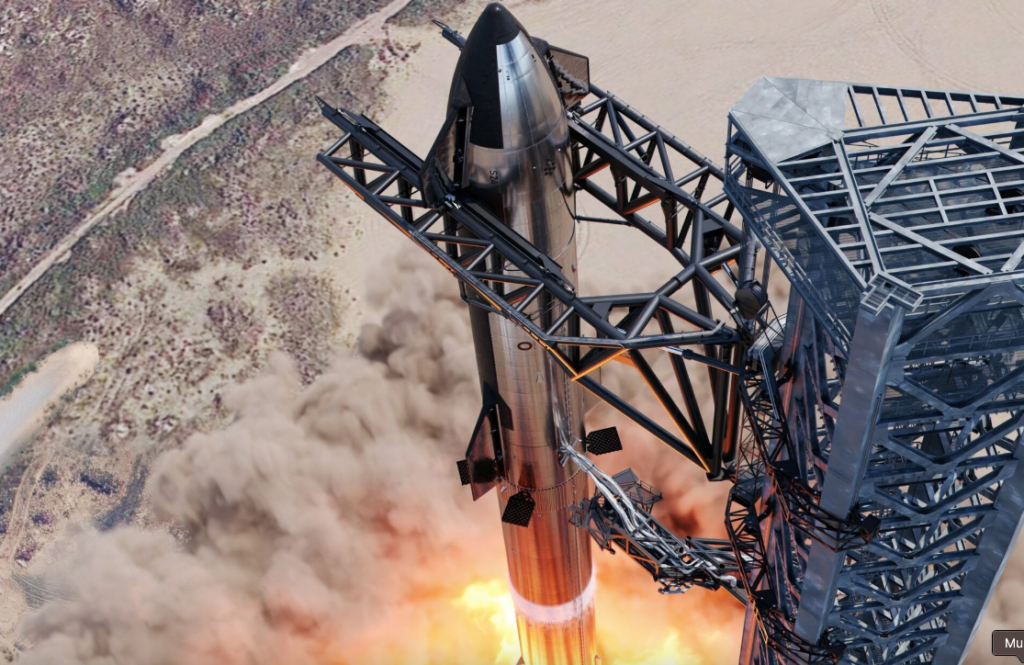|
Getting your Trinity Audio player ready...
|
In a groundbreaking test flight on Sunday, SpaceX pushed the limits of space exploration once again by successfully catching its Starship rocket booster with massive robotic arms upon its return to Earth.
This remarkable achievement marks a significant milestone in reusable rocket technology, one of SpaceX’s core missions, as it paves the way for more sustainable space travel.
A Daring Launch and Risky Landing
Launching at sunrise from SpaceX’s facility in Boca Chica, Texas, near the Mexican border, the 121-meter Starship embarked on its fifth test flight. Previous attempts had either resulted in the destruction of the rocket after liftoff or a controlled crash into the Gulf of Mexico. However, Sunday’s mission was unlike any other.
This time, the SpaceX team, led by founder and CEO Elon Musk, had an ambitious plan: to not only send the rocket to space but to catch the 71-meter rocket booster upon its return to Earth using a pair of massive robotic arms attached to the launch tower. These arms, which SpaceX has playfully named “chopsticks,” performed the delicate and dangerous task of intercepting the booster mid-air and securing it safely on the launch pad.
The tower has caught the rocket!!
— Elon Musk (@elonmusk) October 13, 2024
pic.twitter.com/CPXsHJBdUh
“The tower has caught the rocket!!” Musk announced in excitement on X, formerly known as Twitter. The announcement was met with cheers from SpaceX employees who watched in awe as the event unfolded in real time.
A Landmark in Rocket Reusability
This successful catch is a momentous achievement for SpaceX, known for revolutionizing the space industry with its reusable rocket technology. The company has been recovering first-stage boosters from its smaller Falcon 9 rockets for nearly a decade, landing them on floating ocean platforms or concrete slabs miles away from the launch pad. But landing a rocket booster directly back onto the launch pad using robotic arms is a first and sets a new precedent in space technology.
“Even in this day and age, what we just saw is magic,” said Dan Huot, a SpaceX commentator, expressing his disbelief and excitement. “I am shaking right now.”
SpaceX’s Kate Tice, from the company’s headquarters in Hawthorne, California, echoed Huot’s sentiment, calling it “a day for the engineering history books.”
Real-Time Decisions and Calculated Risks
SpaceX’s flight director had the critical task of deciding in real-time whether conditions were right for the risky maneuver. According to SpaceX, both the booster and the launch tower needed to be in optimal, stable condition for the catch. Otherwise, the booster would have been diverted to a safe landing in the Gulf of Mexico, as had happened in previous tests.
